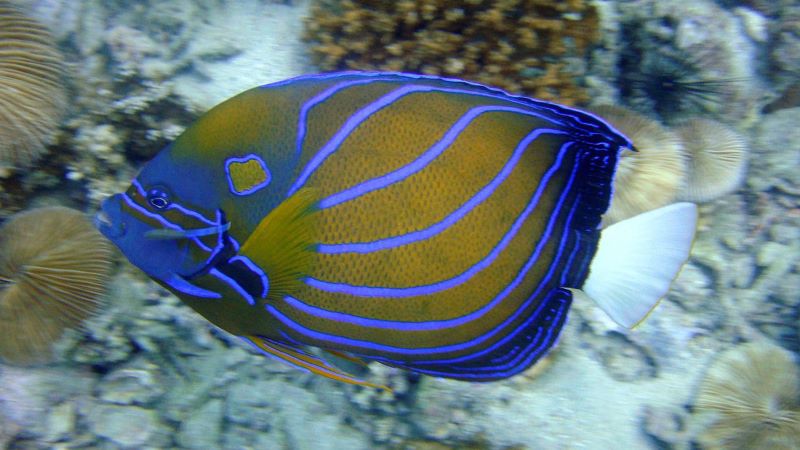Angelfish are a big part of most aquarists’ lives, but one question that many people asks is,” Will angelfish eat shrimp?”. Shrimp is a standard part of most home aquariums, but if you keep angelfish, your shrimp will be in danger. This blog will look at some of the things that people might not know about angelfish and how they can have an impact on your shrimp.
Related Articles
Will Angelfish Eat Shrimp?
Angelfish will happily consume shrimp. Because of their predatory abilities, they will consume shrimp. Angelfish are commonly observed eating shrimp and other tiny water animals.
Angelfish are known for pursuing aquatic animals that fit within their jaws. They like to go for and eat smaller shrimps. Angelfish will still go after larger fish that are too huge to fit in their mouths, inflicting terrible damage with their attacks.
On the other hand, Angelfish can have various responses to different types of shrimp, and their compatibilities are also diverse. Let’s discover which kind of shrimp angelfish eat and not eat now!
Cherry Shrimp
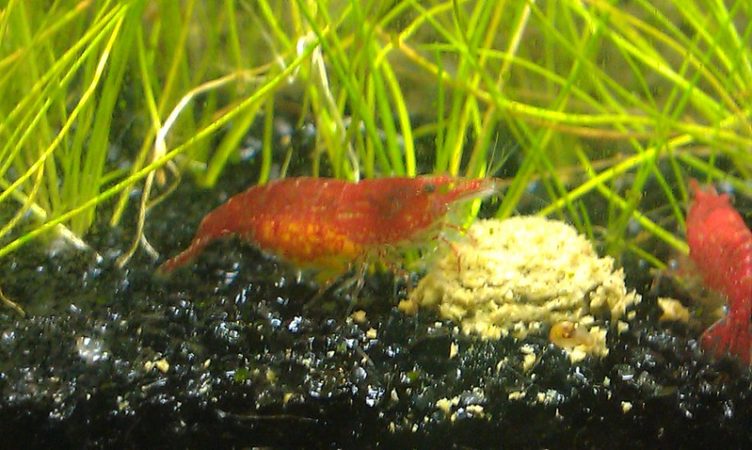
Cherry shrimp are famous. They feature some of the most vibrant colors among shrimp, making them fascinating to maintain and examine. Cherry shrimp are also grown for their utility.
Most amateurs can care about them with little effort. However, bear in mind that they flourish best in water that is kept at a specific temperature.
Temperatures below 18 degrees Celsius are harmful to them because they prevent reproduction. Cherry shrimp must be kept in tranquil aquariums to thrive.
They are doubtful to survive in the presence of angel fish. This is an issue if you have angelfish since they will happily devour your cherry shrimp.
Ghost Shrimp
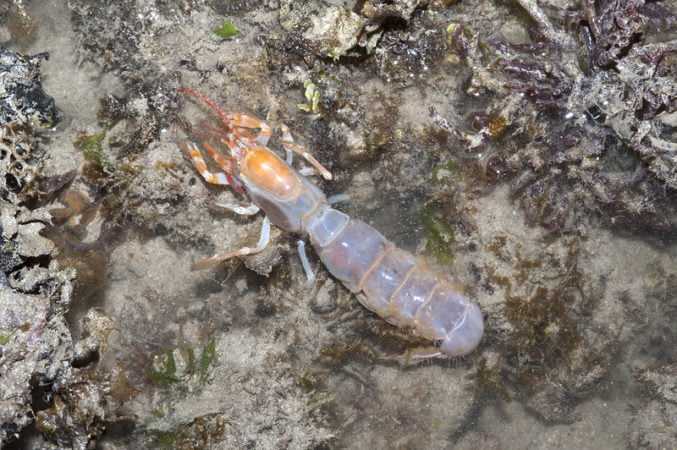
Cherry shrimp are said to be simple to care for. However, ghost shrimp trump them in that department. Ghost shrimp are the sort you acquire if you’re new to shrimp.
Ghost shrimp are prey for cichlids, just as cherry shrimp. There’s a chance that your angelfish won’t hunt ghost shrimp. However, if they manage to come upon these critters in the tank, they are likely to be devoured.
Because they begin their lives as larvae, ghost shrimp are considerably more troublesome. As a result, they’re extremely vulnerable to assault, maybe the most vulnerable at that time of their life cycle. Even if their aquarium contains just shrimp, they can live.
If their communal tank is filled with calm fish, they have a good chance of making it. Angelfish, on the other hand, tend to be aggressive. So, introducing ghost shrimp to their tank is not a good idea, especially in the larval stage.
Amano Shrimp
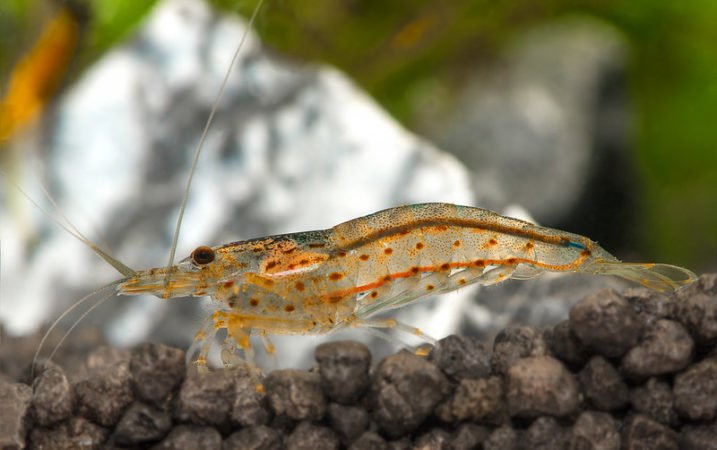
What if you started a shrimp colony? Amano is not your friend, especially when starting. They are incredible for beginners. You can care for them easily. If you keep the water within a set range, they won’t die.
As if that wasn’t enough, they adore algae. This is what they are renowned for. As a result, you can rely on them to keep your tank clean. That being stated, they require particular circumstances to breed optimally. Raising Amano fry needs expertise and knowledge. If you don’t want the hassle, you should forsake them.
In terms of their association with angelfish, Amano shrimp have a greater probability of survival than most other shrimp.
Angelfish have no qualms with consuming shrimp of any type. However, Amano shrimp are rather large. In many circumstances, they will not fit in the angelfish’s mouth. This is what keeps them protected. There are several exceptions. However, in most cases, your Amano shrimp should be OK in a tank with freshwater angels.
Bumblebee Shrimp
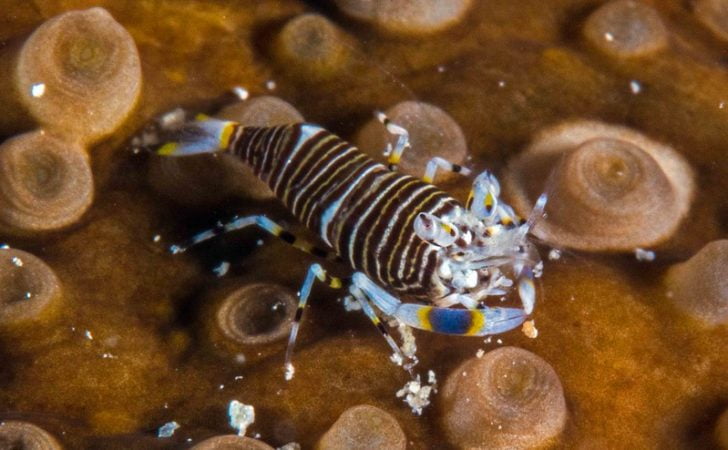
These shrimp receive their name from their looks, as you could have imagined. They have black and yellow stripes that resemble bumblebee stripes. Beginners have no incentive to purchase bumblebee shrimp. This sort of shrimp is more difficult for beginners to handle.
It can survive under the same circumstances as the cherry shrimp, but ammonia and nitrates are toxic. Bumblebee shrimp are generally not for you unless you’re ready to put in the effort necessary to keep their water in excellent shape. They’re no better at protecting themselves against aggressive fish like angelfish.
Snowball Shrimp
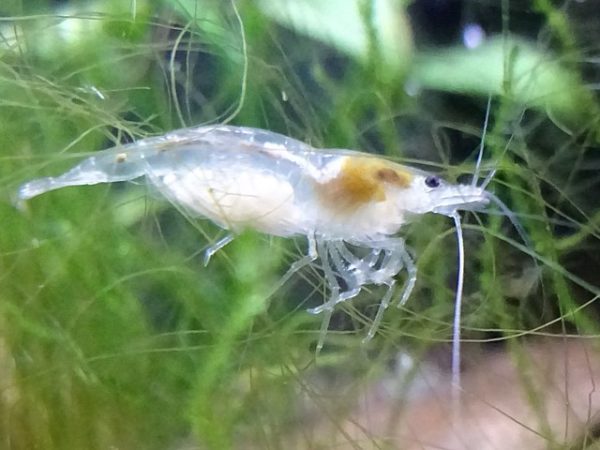
Additionally, snowball shrimp will fit neatly into the genre of shrimp that novices will like. Similar to the varieties described above, these require minimal maintenance. Snowball shrimp, unlike ghost shrimp, are aesthetically attractive.
In addition, they will consume anything. You can utilize them for aquarium maintenance. They will eliminate any algae without hesitation, and they can readily thrive on debris.
Consequently, their chances of survival in a tank with angelfish are not improved. Again, your fish may not necessarily seek them out, but if an unlucky encounter occurs, the likelihood that the angelfish will consume your snowball shrimp is pretty high.
Crystal Red Shrimp
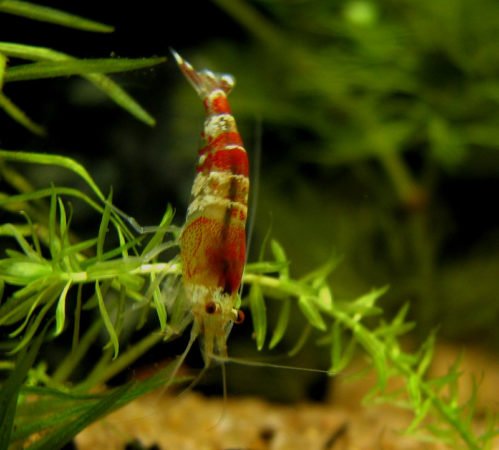
In terms of aesthetics, the crystal red shrimp beats out the cherry shrimp. It is not by luck that crystal red shrimp are so attractive. This is how they’re bred. This is why they are uncommon to be found in the tank of an inexperienced breeder. You don’t keep them in the same tank as angelfish because of their beauty.
Simply put, they’re too costly. Their looks can be blamed for this. People continue to breed them to develop distinctive colors and patterns selectively.
These animals should be housed in tanks with other creatures of their species. In tranquil community aquariums, though, there are techniques to keep them alive. Crystal Red Shrimp do not get along well with angelfish, which may be aggressive.
Panda Shrimp
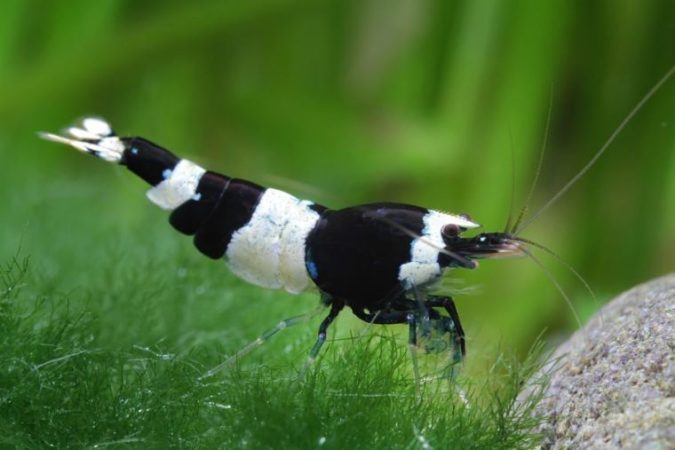
It’s challenging to keep panda shrimp alive. It’s not difficult to see why someone would buy one of these. The term comes from the fact that they feature striking black and white stripes.
Changes in water conditions will have a negative impact on them. As a result, you must maintain a close check on the water in their tank. You can’t depend on them to construct a vast colony readily regarding breeding.
It is not recommended that you keep them with other fish. Angelfish, which may be fairly aggressive, is immediately excluded. The likelihood of them being consumed is pretty high. Breeders prefer not to take risks.
Blue Bolt Shrimp
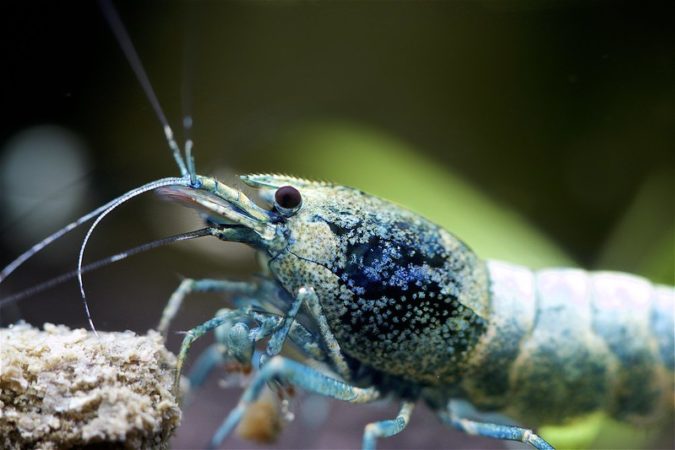
Another lovely shrimp is this one. It’s also quite uncommon. As a result, finding it at your local fish market may be difficult. Beginners should avoid this shrimp. They’re sensitive in specific ways. It’s essential to keep an eye on the water in which they’re submerged. Nitrates, nitrites, and ammonia should be avoided.
In order to survive, blue bolt shrimp require calm environments. So now you know everything there is to know about their connection with your angelfish. They are not going to be able to live together.
Babaulti Shrimp
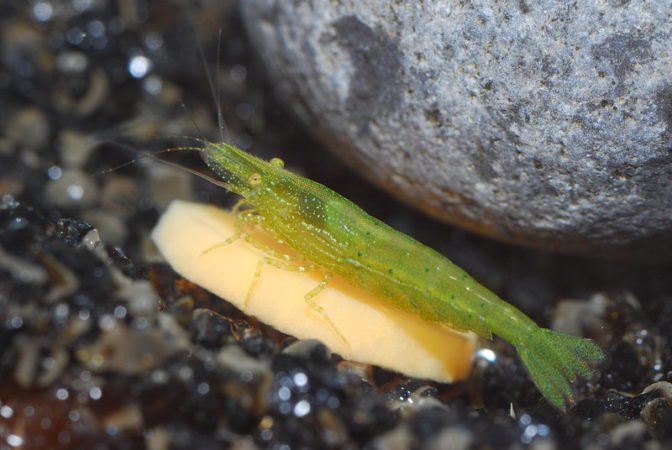
Babaulti shrimp are hardy and require little care. When frightened or irritated, they have the unusual ability to change color. It implies they can swiftly adjust their hue to fit their surroundings.
The babaulti shrimp has a hard time surviving in the presence of ravenous angelfish. On the other hand, Angelfish will have no issue devouring these shrimp.
Babaulti shrimp are commonly seen in planted aquariums, which help remove decaying plant materials. These shrimp assist in the removal of the debris before it becomes hazardous to other species.
Blue Tiger Shrimp
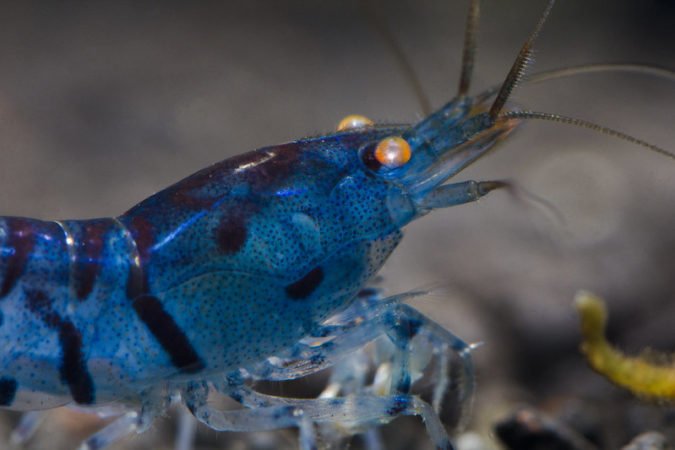
As omnivores, Blue Tiger Shrimps will consume whatever you put in front of them, including vegetables and meat. Their brilliant skin color makes them attractive, and hobbyists appreciate them for it.
They do, however, require special attention, and the temperature and pH level of the water must be constantly maintained.
Blue Tiger Shrimp will perish if they are kept in the same aquarium as Angelfish. There will be no Blue Tiger Shrimp alive due to the aggressive behavior of Angelfish.
Why Do Angelfish Eat Shrimp?
The angelfishes aren’t picky eaters. They will consume many small creatures, although they are mainly peaceful. Below you will find explanations for why angelfish consume shrimps.
1. Their Diet Is Omnivorous
Angelfish consume plants, small fish, insects, crustaceans, and other invertebrates in their natural environment. In addition, angelfish are not fussy about the food they eat.
Due to their omnivorous characteristics, these fish eat shrimp, floating fish, and other available creatures in the tank.
2. Their Size Is Greater Than Shrimp’s
Anglerfishes are predatory. Small, fit-in-the-mouth creatures, like shrimp, are commonly consumed by them. Invertebrates and small fish are natural prey for large angelfish.
3. They forage at the bottom.
The shrimp live on the bottom of the ocean, hiding among aquatic mosses, plants, and other hiding places. In the wild, angelfish are typically surface or mid-water swimmers able to hunt along the bottom. Undoubtedly, they can always eat an unsuspecting shrimp and injure it with their teeth.
Are Angelfish Always Eat Shrimp?
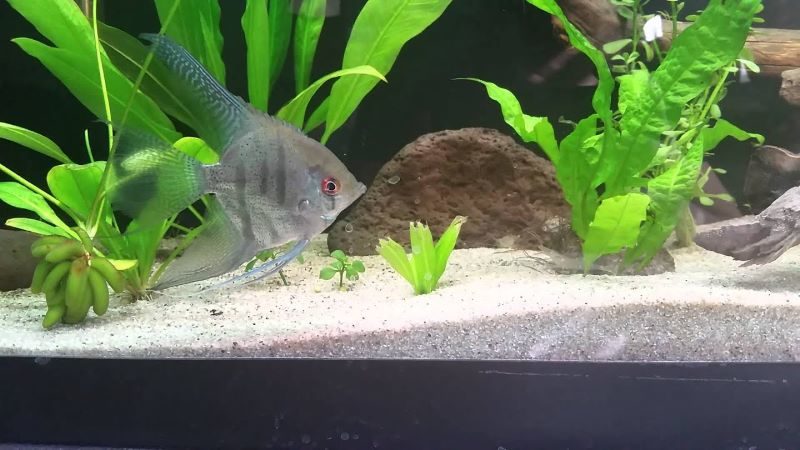
Angelfish aren’t choosy when it comes to food. As previously stated, they will devour everything they can capture and fit into their jaws. You may argue that the relatively large shrimp Amano is now inherently safe.
That, however, is not the case. Angelfish may grow to enormous sizes that most people are unaware of. If your angelfish becomes large enough, they will easily consume your Amano or other shrimp. Many people successfully raise shrimp and angelfish in the same tank.
To begin with, shrimp are not always dumb creatures. You’ll often discover that they spend most of their time hidden and only come out to eat. They are also reasonably swift, fast enough to escape the clutches of an angelfish that chooses to attack them out of nowhere.
Also, don’t be shocked if you come across angelfish that are entirely uninterested in the shrimp in their immediate vicinity. With cichlids, especially angelfish, it’s impossible to predict how they’ll behave.
The angelfish can consume shrimp. That isn’t to say that they always want to. Simply stated, certain fish are more aggressive than others. Having said that, if you enjoy shrimp, you should keep them away from your Angelfish.
What Can I Do To Stop Angelfish From Eating My Shrimp?
1. Introduce Unfamiliar Territory
Introducing shrimps before Angelfish is a simple method of increasing the chances of your shrimps becoming friends with the fish. New environments tend to make angelfish more gentle. Adding shrimp first makes them more accepting of the fish.
As a result, the shrimps must have established a territory before the angelfish showed up. Do not put shrimps in an angelfish tank.
2. Adequately Feed The Angelfish
Most angelfish swim at the surface or in the middle of the water. While in the wild, they chase worms, shrimp, and other invertebrates along the bottom.
So make sure they receive flakes, pellets, granules, and vegetables. They will be calmer and less hostile toward the shrimp if they feed on them. It will also prevent the angelfish from grazing on the bottom of the tank.
3. Provide Hiding Places
Another technique involves creating a hiding place for shrimps. Keeping shrimps and Angelfish in the same aquarium requires a large aquarium. Make sure there are plenty of plants, decorations, and other aquatic life.
Shrimps will be able to hide in the plants and decorations. The large tanks will give each aquarium member a place to call home.
4. Limit The Amount Of Angelfish
Keep your Shrimps and Angelfish together with a minimum number of Angelfish if you want your relationship to work. Your shrimp survival rate is directly related to how many Angelfish you have in the tank.
Video: angelfish meet new cherry shrimp
FAQs
Will angelfish eat ghost shrimp?
Ghost Shrimps and Angelfish are unquestionably incompatible. They are both violent and can injure each other. This type of shrimp is also at risk of being devoured by Angelfish.
Furthermore, they are tiny and may easily fit into the mouth of an Angelfish. This is why experts advise against mixing Angelfish and Ghost Shrimp.
Do angelfish eat brine shrimp?
Angelfish prefer freeze-dried brine shrimp, bloodworms, and other freeze-dried foods. These meals don’t have as many nutrients as living foods, but they’re also free of parasites and germs.
Do angelfish eat dried shrimp?
Bloodworms, brine shrimp, blackworms, mealworms, and other frozen or dried insects can also be fed to angelfish.
Reference:
https://en.wikipedia.org/wiki/Pterophyllum

Annette M. Chaney is an experienced marine biologist with over 20 years of experience as an aquarist and fishkeeper. She started her first aquarium at a young age, filling it with frogs and goldfish obtained from the ten-cent pet store.
Annette grew up caring for and breeding African Cichlids, which led to a hobby in high school that doubled as a profitable means. Attending Reed College gave her time to solidify herself as an accomplished aquarium caretaker with an eye for sales. After that, from 2009 – 2013, she studied at Roger Williams University – one of the most prestigious universities for Aquaculture and Aquarium in USA. She is the founder of AquariumCircle since 2010.
